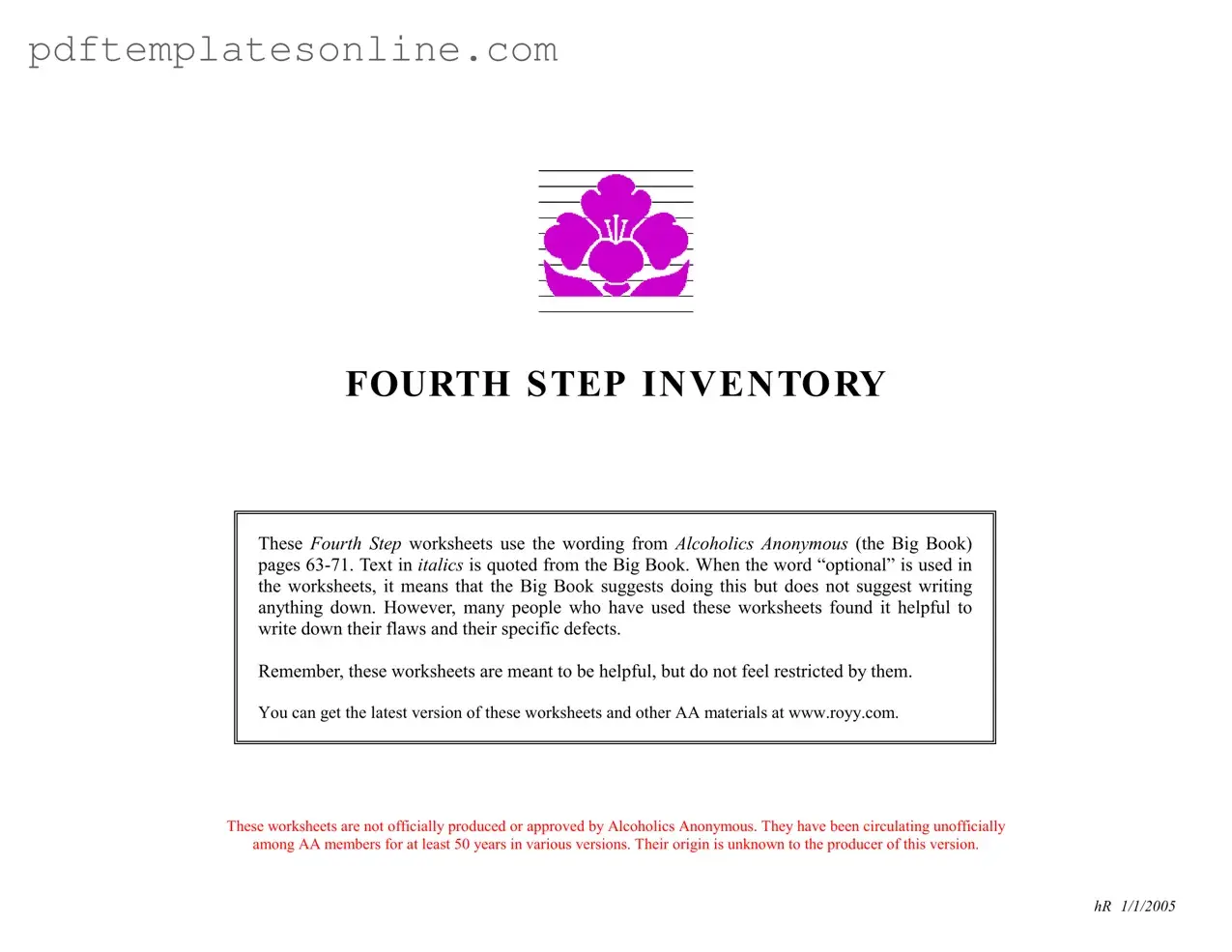1. The Fourth Step Inventory is only about flaws. Many people believe that this inventory focuses solely on identifying character defects. In reality, it also encourages individuals to recognize their strengths and positive traits. Balancing flaws with assets is essential for a comprehensive self-assessment.
2. You must follow the worksheets exactly as they are presented. While the worksheets provide a structured approach, they are not rigid templates. Users are encouraged to adapt the process to fit their personal experiences and moral codes. Flexibility is key to making the inventory meaningful.
3. Completing the Fourth Step will eliminate all character defects. Some individuals mistakenly think that finishing the Fourth Step will result in immediate change. The process is ongoing, and true transformation often requires additional steps, such as the Sixth and Seventh Steps, to address these defects.
4. The inventory is only relevant to those who have recently stopped drinking or using drugs. This misconception suggests that the inventory is only for individuals in the early stages of recovery. In fact, it is a valuable tool for anyone seeking personal growth and self-awareness, regardless of their current relationship with substances.
5. You must list a specific number of flaws and assets. Some people believe that there is a required number of flaws and assets to list. However, the focus should be on quality rather than quantity. Individuals should prioritize the flaws that cause the most trouble in their lives, rather than adhering to arbitrary limits.
6. Writing down flaws is a form of self-punishment. Many fear that documenting their defects will lead to self-criticism. The purpose of this inventory is not to shame but to foster honesty and self-reflection. It is about understanding oneself better, not about self-condemnation.
7. The worksheets are officially endorsed by Alcoholics Anonymous. Some individuals assume that these worksheets have official approval from AA. In truth, they are unofficial materials that have circulated among members for decades. Users should approach them as helpful tools rather than authoritative documents.
